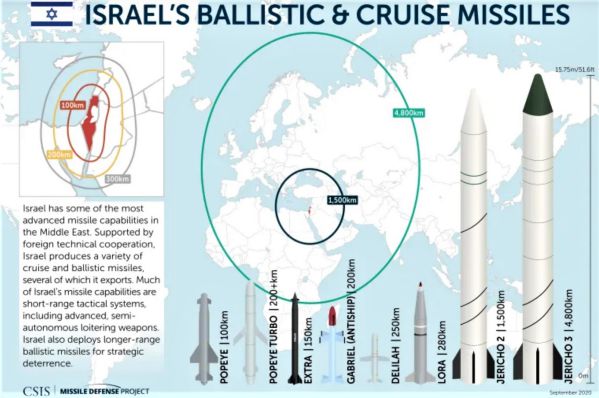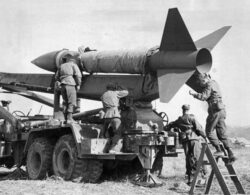by Charles Knight, 09 January 2022
Iran – Israel/USA
 It is thought that Israel built its first deliverable nuclear weapon in 1967. Israel has never acknowledged possession of nuclear weapons. Although U.S. Presidents Kennedy and Johnson vigorously objected to Israel’s development of nukes, by 1969, the U.S. had joined Israel in a policy of deflective silence (“deliberate ambiguity“). Because of this official silence, it is difficult to estimate how many nuclear weapons Israel has today. A careful review of available sources in 2014 found that Israel “has a stockpile of approximately 80 nuclear warheads.” It is likely somewhat larger today.
It is thought that Israel built its first deliverable nuclear weapon in 1967. Israel has never acknowledged possession of nuclear weapons. Although U.S. Presidents Kennedy and Johnson vigorously objected to Israel’s development of nukes, by 1969, the U.S. had joined Israel in a policy of deflective silence (“deliberate ambiguity“). Because of this official silence, it is difficult to estimate how many nuclear weapons Israel has today. A careful review of available sources in 2014 found that Israel “has a stockpile of approximately 80 nuclear warheads.” It is likely somewhat larger today.
The precise details of Israel’s nuclear arsenal are less important than the simple fact that the Iranian government is well aware of Israel’s nuclear arsenal. Their intelligence services have certainly supplemented the open-source information summarized above. They also know that they are the primary target of these weapons.
North Korea – South Korea/USA
https://upload.wikimedia.org/wikipedia/commons/c/cb/1958-02-06_Atomic_Weapons_come_to_Korea.ogv
Several years after the signing of the Korean War Armistice in 1953, the Joint Chiefs informed President Eisenhower of an intelligence finding that North Korea was building up its armed forces beyond the limits stipulated in the armistice agreement. Eisenhower believed that newly developed tactical nuclear weapons could dissuade the North Koreans from any inclination they might have to renew fighting on the peninsula. Despite opposition from his State Department, the President ordered tactical nukes sent to Korea. The above video celebrated their arrival in 1958.
Thus it was that the U.S. introduced nuclear weaponry onto the Korean Peninsula. The number of U.S. tactical nuclear weapons increased after 1958, reaching a peak of approximately 950 warheads in 1967. As the Cold War ended in 1991, the deployment of tactical nukes to Korea ended. Presently, South Korea is explicitly included under the U.S. doctrine of extended deterrence.
The North Koreans are, of course, aware of this history and at whom the weapons are targeted.
Discussion
As 2022 begins, North Korea is a de facto nuclear state with a minimum deterrent arsenal in ongoing development. Iran is said to be refining fissile materials and on the cusp of constructing its first nuclear weapon. Both states are currently subject to severe economic sanctions. Negotiations or diplomatic discussions, whether formal or behind the scene, continue. In the case of Iran, there have been speculative forecasts of imminent counter-proliferation strikes by Israel.
I have included two particular sets of facts in this history note. Both are relevant to present instances of actual or potential nuclear proliferation. I have edited each to make them as “simply factual” as I am able. Nonetheless, I would not fault a reader’s suspicion that I have selected them to build a partisan narrative, as is often done with selective facts.
My intent is quite different. The instances of history I have presented are illustrative of the kind of history that will strongly affect the “other side” in a negotiation. In each case, they are examples of vital interests involving existential threats that are ever-present at the negotiating table, even if they are not on the immediate agenda.
Attempts to compel the other side to surrender its vital interests in negotiations usually fail. For diplomacy to succeed it is necessary to attend to the historical perspective of the other side. Without that consciousness, two sides to a dispute cannot hope to negotiate an agreement on how to meet the vital security needs of both parties.

